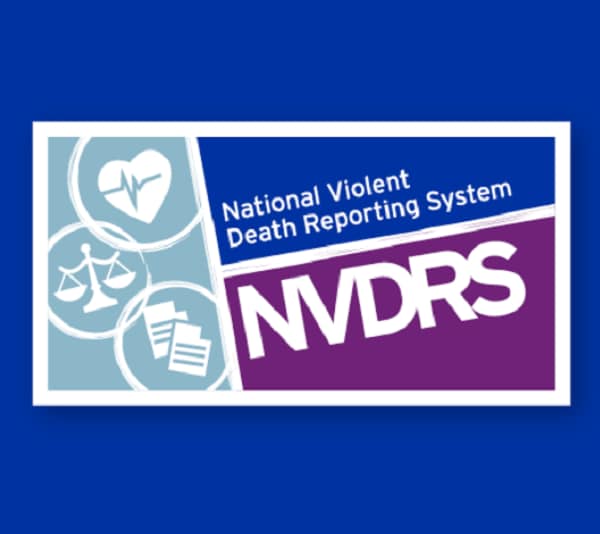National Violent Death Reporting System (NVDRS)
The Centers for Disease Control and Prevention (CDC) maintains the National Violent Death Report System (NVDRS) to provide comprehensive information on all types of violent deaths—including homicides and suicides—in all settings and for all age groups. Funded jurisdictions collect facts from death certificates, coroner/medical examiner reports, law enforcement reports, and toxicology reports into one anonymous database. Data elements collected provide valuable context about violent deaths, such as relationship problems; mental health conditions and treatment; toxicology results; and life stressors, including recent money- or work-related or physical health problems. Decision-makers and program planners can use this unique source of comprehensive information to develop and tailor violence prevention efforts.

- NVDRS All 50 states, the District of Columbia, and Puerto Rico participate in NVDRS. It is the only state‐based surveillance system that combines more than 600 unique data elements from multiple required sources, death certificates, coroner/medical examiner reports (including toxicology), and law enforcement reports, into an anonymous database. NVDRS covers all types of violent deaths – including homicides and suicides – in all settings for all age groups
- NVDRS Resources provides links to fact sheets, CDC manuals, CDC tools, most recent Morbidity and Mortality Weekly Reports (MMWRs), and journal articles, and impact examples from VDRS programs about how the data are used for violence prevention.
- NVDRS Overview Fact Sheet describes how NVDRS helps CDC monitor and track deaths related to violence. It also provides information on the benefits and challenges of NVDRS, examples of program highlights, and next steps. Also available in Spanish.
- NVDRS and Coroner/Medical Examiner Partners Fact Sheet describes the essential role coroners and medical examiners have in NVDRS. Also available in Spanish.